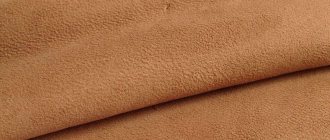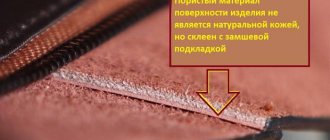Precautionary measures
- It is not recommended to wind the seal using two or more pieces - this will compromise the tightness and strength of the connection.
- The tape on the thread should not be partially unwound, since if it is applied again, the connection will lose reliability. If winding is unsuccessful, the material should be removed completely and the process repeated.
- If, when connecting the elements, too much tension is created, which can lead to breakage, the tape will not be loosened. In this case, you also need to apply the seal again, removing the old section.
FUM tape is a material that is sufficiently reliable when sealing threaded connections. Its correct use will ensure the tightness of any pipeline even for a person who does not have extensive experience in plumbing work.
Plumbing flax
Plumbing flax is used when connecting elements of water supply and sewerage systems, when laying gas pipelines and assembling water heating systems.
The sealing properties of flax appear when, under the influence of moisture, the fibers expand and reliably fill all threaded gaps.
Flax as a sealant is suitable for almost all types of pipes and fittings. The exception is products made of aluminum, metal-plastic and polymer compositions.
Fibers of various qualities are available for sale, marked in the range from 8 to 24. The lower the index on the packaging, the more impurities the flax contains. Packing - usually coils or braids of fibers of a certain length. The latter are more expensive, but they are very convenient for work - the necessary strand for compaction is formed without much effort.
The color of high-quality sanitary linen can be white and light gray, or beige. Spoiled fibers will have an unpleasant rotten smell.
In addition to flax, when sealing threaded connections you will need a special sealing paste (“unipack”, “multipack”).
Scope of application
Anaerobic sealants were invented in the fifties of the last century in the USA and were initially used only in industrial areas. Later they came to the USSR, and with the decline of the industrial complex, sealant manufacturers tried to popularize their products and find new uses for them. This is how anaerobic gels and pastes migrated to construction.
Initially, it was forbidden to use them when sealing water pipes, since it was believed that their contact with water would poison it, and the water would not be drinkable in the future. However, subsequent studies have shown that the compounds used in anaerobic fixatives are completely safe.
Currently, thread sealants are used in several areas.
Water supply. Using anaerobic gel, water pipes in apartments and houses are sealed. They are not suitable for insulating pipes located outdoors due to the impossibility of sealing large diameters. The clamps are also suitable for insulating sewer pipe joints, as they can withstand high water pressure. It is better to use blue sealants.
Plumbing. Water is supplied to the plumbing using pipes, the connection of which must also be made airtight. To do this, a sealant that is resistant to high temperature fluctuations is again used.
This is especially important, for example, when connecting a washing machine. Care must be taken to ensure that the clamp is suitable for sealing plastic pipes.
- Heating. As in the previous case, the sealant must withstand temperature fluctuations and also be resistant to heating antifreeze and other chemical compounds. If Soviet cast iron radiators are insulated, then it is necessary to use only red varieties of anaerobic gels, since others are not intended for working with ferrous metals.
- Gas pipeline. Here, the tightness of the pipes is especially important, since a gas leak will lead to property damage through an explosion. You can also lose your life. You cannot use green sealant, only blue. It is also not advisable to use red, since if necessary, dismantling will be impossible. It is best to entrust the sealing of gas pipes to professionals to avoid possible mistakes.
Preparatory stage
Before winding flax or tow on the thread, you need to prepare the joint surface and determine the required amount of tow. Screw the fitting onto the thread as is, without wrapping anything. This will help determine how much tow you will need to take.
If the thread is smooth and even (in the case of factory threading, most likely this will be the case), it is recommended to apply notches on the threads for better adhesion. For this, a water wrench, a triangular socket or regular pliers are suitable; all you need to do is apply notches across the thread, without being too zealous. This is done in order to prevent the tow from sliding along the threads.
The notches should not be too deep; you do not need to literally pierce the metal (watch the video). The reliability of the connection in the future will depend on how the tow is wound correctly. If you put too little and rarely, it will leak, but too much can be much more dangerous - a wound area that is wrapped too tightly can burst when the temperature rises (as you know, metal expands when heated).
Loading …
Comparison of sanitary tow and fum tape
Which is better linen or fum? Plumbing tow (flax) and fum tape have their pros, cons and distinctive properties. The first material is used to seal various connecting parts of steel pipes.
Let's determine what to choose: fum tape or linen.
Let's consider the main advantages of sanitary tow:
- the connection can be adjusted. The connecting part of the fitting can be unscrewed by as much as 45 degrees;
- tow ensures reliable sealing. Has the ability to absorb moisture;
- this plumbing material is resistant to mechanical stress;
- If necessary, the plumbing tow can be dismantled.
So, which is better: fluoroplastic sealing tape or flax tow? The choice depends on what kind of plumbing work you want to do. In more complex procedures, it is better to use fum tape.
How to wind flax on a thread
Hello dear homemade people.
Until now, the best winding for thread is linen. First, I will justify this statement, and then we will analyze the execution process piece by piece.
The first alternative to flax is fum tape. There are at least three reasons why it should be abandoned.
1. It is unknown who made it, despite what is indicated on the label, which means there are no guarantees of quality.
2. It takes a long time to wind it.
3. When tightening the thread, especially when installing valves, it is impossible to correct its position, that is, you can only tighten it forward. If you push it back a little, the connection on the gun will leak.
The second alternative is a Tangit unilock pipe with a lock. I won’t argue about the lock - it’s dead, but as for the key: consider that they screwed it up and threw the key away, so you can’t find it.
You can't unscrew it, you can only cut it.
Linen is a completely different matter.
Which is better linen or fum tape for water?
A professional plumber always has different types of seals on hand:
- fum tape;
- flax and sanitary paste;
- threads (type “Tangit”);
- anaerobic sealant.
The craftsmen know that all seals, when installed correctly, perform their task 100%. But to do this you need to know how to use it, what to use and under what circumstances. The abundance of modern sealing materials has displaced flax from its leading position. But not all masters agree with this.
The fact is that in past decades flax was used together with red lead or oil paint. Today – with Unipak plumbing sealing paste. Its main task is to prevent the flax from drying out and rotting. Connections made using these materials can be adjusted (axially shifted) by 45° without loss of tightness.
Benefits of flax:
- inexpensive price;
- suitable for sealing threads of any diameter;
- the connection will be good regardless of whether the base surface is wet or dirty.
The disadvantage is that any connection made with flax subsequently requires additional twisting and tightening. Another “minus” of flax is that it is not very convenient to work with: the fibers delaminate and cling to clothing and the tools and materials used.
If you compare flax and fum tape, the latter loses in that it does not allow you to adjust the connections without losing the tightness. That is, if you need to slightly turn an already tightened fitting, leaks may form in this place.
How to reel
everything is very simple. The main thing is not to be afraid and not to overdo it. The bottom line is this: If you wind too much, the connection may burst; if you wind too little, it may leak. How to use Unipack? The manufacturer recommends spreading the paste onto the cleaned threads, then wrapping flax and adding another layer of uniatka on top. We smear only on top, and sometimes I just smear the entire strand with unipak and then wrap it around the thread.
The most important thing is that you need to wind the flax so that when twisting it does not unwind. On a regular thread, wind it clockwise. When twisting the product, the linen will not unravel
And so, here we go:
When twisting the product, the linen will not unravel. And so, here we go:
Did you reel it in and apply a unipak? Now let's twist it.
The most important thing is not to wrap too much so that the fitting does not crack. This connection must be carefully tightened with two keys. And we can end here. Let's move on to the next connection.
To seal connections you need to use your choice:
1. Linen + sanitary paste.
Linen is not suitable for temperatures above 90 degrees; over time, it boils, burns, and loses its properties.
2. TANGIT Uni-Lock or equivalent.
Tangit Uniloka is more expensive than its analogues, 20 meters of Tangit Uniloka (packaging on a blister on which it is written that it is enough for 50 connections for a 1/2-inch thread) costs 130 rubles, and the analogue - “Plumbing” 50 meters costs the same 130 rubles ( in Leroy-Merlin, St. Petersburg).
3. Polyamide thread + silicone lubricant.
On the packaging of Tangit Unilock and its analogues the composition is written: polyamide thread + silicone. If we want to save money, we conclude: you can buy regular thick polyamide thread at a hardware store or a sewing store and buy thick or liquid silicone grease from auto parts or the same plumbing paste.
4. Linen rope + plumbing paste.
Construction and hardware stores sell household linen, jute and similar ropes made from plant materials. They cost about 50 rubles. for 50 meters.
Silicone sealant is not suitable because it polymerizes/hardens and if you need to position the connection, say, after a few hours, it will be torn inside the thread. Therefore, it is necessary to use a non-hardening and non-washable sealing filler. Additionally, vinegar-based silicone sealants can be corrosive to metals.
In general, in order to understand what is better, you just need to experiment.
How to wind? Crosswise, as indicated in the instructions for Tangit unilok, either with or against the thread - it’s all a matter of habit. The main thing is to wind it tightly so that the thread is covered with the material used. I can wind it this way and that way, and nothing will come out of the thread or leak. But still, thread or flax wound against the thread will be cut faster when tightening the nut, this is obvious.
Winding different materials for 1/2" thread:
1.
We take flax, smooth it, cut off a strand one, or maximum two, matches thick. We smooth the separated strand again, holding it between our fingers, and throw away the small fibers. If desired, you can twist the strand into a lace. We wind it very tightly along the thread, starting from the edge so that the thread groove is completely closed. Then we take the plumbing paste and spread a small amount with rotational movements onto the wound flax. If your hands grow from the right place, then everything should work out very neatly. Then we tighten the connection, twisting should occur with a certain force, but not with all the dope! If the nut tightens easily, it means there is not enough flax, or there is too much gap between the internal and external threads. You need to unwind the flax and wind more new one. If everything is done correctly, then the linen should not come out from under the thread and it will be dry :)
2.
We wind the Tangit unilock thread along the thread or crosswise 6-8 turns and connect it. And that's it.
3.
Homemade option. We also wind the polyamide thread and coat it with plumbing paste or thick silicone grease. Or first soak the entire skein of thread with liquid silicone lubricant. We wind on the connection. Let's connect. That's all. If you soak or soak a skein of thread in liquid lubricant, then you need to put it in some small plastic box or bottle so that dirt does not stick to the thread and it does not stain anything.
4.
We separate the linen rope into two laces from which it is twisted. We cut off 40-50 cm. We wind it onto the thread. Lubricate with plumbing paste and tighten the connection.
Synthetic thread - Tangit Unilock or an analogue - is the most versatile!
True knowledge will come only with experience!
Anaerobic gel sealants sanitary gel
Another modern material for sealing pipe threads is sanitary gel. Reliable compaction occurs due to the polymer component of the gel. After hardening, sanitary gel does not shrink or expand, is resistant to temperature changes (from -60 to +150) and pressure surges, and has proven itself in various environments: water, natural and liquefied gas, heating antifreeze.
How to seal a plumbing connection: flax, fum tape, anaerobic sealant - a specialist decides
Sanitary gel is produced in three types:
- In green tubes - easy dismantling.
- In blue - medium dismantling.
- In red (Stop Master Gel) – dismantling with heating.
Installation using sanitary gel is simple: shake the tube and apply the gel in a thick layer around the entire circumference of the thread, distribute it evenly (with a brush, a special spatula), and assemble the structure. Excess gel is removed with a rag. Polymerization of the gel occurs in 15–20 minutes.
Useful tips
Around the wound flax it is necessary to treat it with a special paste intended for plumbing or use any other sealing material, the application of which should be carried out in a circular motion. This procedure must be carried out as carefully as possible. The second end should be glued closer to the edge of the thread and before tightening it is necessary to check whether the pipe lumen is filled with sealing material.
Important! Organic tow cannot be used for gas connections, since under the influence of gas it, together with the additionally used silicone, will be destroyed. For this task, the best option is fum tape.
Winding flax onto a thread with your own hands
To properly pack a thread with flax, you need to take a small amount from the whole “braid”, and from the beginning of the thread start laying flax in each turn clockwise
At the same time, it is important to ensure that the flax is wound evenly so that each turn of the thread contains approximately the same amount of flax.
You should not wrap flax tightly around the thread, since in this case it will be very difficult to tighten it later, and the risk of the thread bursting increases significantly. This is especially true for threaded connections made of non-ferrous metals, which have very thin walls and low strength.
It is normally believed that after winding tow on the thread, its upper edges are barely visible. In this case, installing a threaded connection with your own hands can be done quite easily and without excessive effort.
As a rule, you should not skimp on the amount of tow when winding threads made of ferrous metal - cast iron or steel. This is especially true for cast iron threads, from which, after screwing, the tow simply comes off.
After the flax is wound onto the thread, its surface is lubricated with sealant, and the paste must be pressed into the tow, and that in turn into the thread. Just do this again clockwise, or in the direction in which the flax is wound.
Winding flax on ecoplastic
When working with this material, extreme caution must be taken, since it, like brass, can burst. Taking this into account, you don’t need to be too zealous when twisting.
Before carrying out work, you should connect both fittings and count the number of revolutions. After this, they need to be separated back and you can begin to wind the flax evenly. Upon completion of winding, the surface of the tow must be treated with additional compounds and only after this can the fittings be connected.
If, for example, 6 turns were counted during preliminary screwing, then after winding the flax it is better to make half a turn less and not tighten as much as possible. In such a situation, it is more optimal to use packaging paste instead of sealant.
What sealants does the building materials market offer?
There are several types of sealing materials that differ in cost, ease of use and reliability of use:
- FUM tape (fluoroplastic sealing material)
- Sealing thread
- Linen thread
Among all the FUM proposals, tape is quite difficult to use, sealing thread has good qualities, but is too expensive, and only flax is an impeccable product that has proven itself over many decades.
How to properly wind flax on a thread?
To ensure a strong and tight connection, the threaded areas must be cleaned of rust using fine-grained sandpaper
At this stage it is important not to damage the threads. Then you should check whether there are notches on the thread - with them, the laid flax threads are fixed and do not move when connecting the parts. If there are no notches, they can be applied with a file or a plumbing wrench.
If there are no notches, they can be applied with a file or a plumbing wrench.
Proper winding of flax consists of several steps:
Check the tightness of the connection with a clean, flax-free thread to understand how thick the winding should be. Take a bunch of flax and separate a strand of sufficient thickness from it to obtain a tight connection. The flax hairs should be the same length, without lumps, straw or debris. Twist the strand into a loose rope of such thickness that it can fill one thread groove. Holding the end of the flax rope at the edge of the thread, wind it in the direction opposite to how the nut is tightened. Each subsequent turn should fit tightly to the previous one
Here it is important not to overdo it with the number of layers, there should be no more than two, otherwise the connection may burst when tightened or from hot water during operation. If the bundle turns out to be short, winding should be continued with the next bundle. Inspect the reverse side of the winding and make sure there are no bald spots. Apply a layer of special paste or silicone on top of the flax and tighten the connection until the paste hardens. The use of a sealing composition contributes to the durability of the connection, prevents rotting of the flax, and makes it easy to disassemble the structure in the future
Sealant should not be used as a sealant; such a connection is difficult to disassemble.
The use of a sealing composition contributes to the durability of the connection, prevents rotting of the flax, and makes it easy to disassemble the structure in the future. Sealant should not be used as a sealant; such a connection is difficult to disassemble.
Using a sealant when threading pipe systems is easy. This approach does not require the use of expensive equipment, and can be easily performed by both a professional and a home plumber.
1. Purpose of tow and how it works.2. Types of sealing materials.3. Method of sealing pipe threads with tow.
In plumbing work, tow is used to seal pipes and transitions connected by threads. It is made mainly from flax waste and is a coarse fiber of small size. If you wind the tow correctly, protection against leaks will be provided throughout the life of the pipeline. Answering the question of how to wind tow on a thread, it should be said that the quality of workmanship prevents the risk of a leak in the plumbing system. There is a gap between the threaded connections through which water freely flows out of the pipeline. If it contains properly laid plumbing tow, then the gap becomes smaller, and as water penetrates into such a connection, the flax swells and the leakage stops.
Linen (tow), fum or plumbing thread?
Ordinary tow is an old but proven remedy in plumbing; in fact, it is the “old-fashioned method”. Tow is suitable for both winding and other work. Modern industry offers alternatives such as fluoroplastic (fum) tape and ready-made sealing threads.
While their use may be more convenient for a number of reasons, linen has its advantages: it is more environmentally friendly compared to fluoroplastic and is much more affordable than special plumbing thread. It is quite possible that in the future we will see new solutions that will displace flax, but for now, knowing how to wind tow on a thread will never be superfluous for a business person.
Tow for pipes is one of the most popular sealants on the Russian market. Linen winding has been popular for many decades due to its low price, availability and relatively good sealing of joints under special conditions. Winding flax onto threads is relevant for temporary threaded connections and those located in the public domain, i.e. are always in sight, leaks are easy to detect and fix immediately. Flax compounds work up to a maximum temperature of 120-140 °C, but sometimes this figure is reduced to 70 °C. It all depends on the quality of the material and an additional means of sealing - plumbing paste.
Let's talk about the technology and rules of flax winding. How to properly wrap tow on a thread so that the sealing is sufficient for the entire shelf life of the joint? What are the tricks and professional secrets for high-quality thread sealing?
How to wind tow
This question is asked not only by the owner of an apartment where a faucet has suddenly leaked or the faucet needs to be replaced, but also by a plumber who has recently started his career.
Linen is indeed not the simplest and most convenient material. Linen does not look aesthetically pleasing, it fluffs up and tears easily, and flax fibers constantly cling to threads or clothing. Almost weightless, they scatter around the room and, having finished the work, the plumber has to spend time finding and collecting all the threads.
In various videos from the series on how to wind tow on a thread, there are categorical tips on preparing the thread. They touch the notches. The notches prevent flax from slipping during winding, twisting and further use. However, not in all cases.
Firstly, notches are completely unnecessary when the diameter of the pipe is larger than the thread. The protruding part of the pipe will hold back the tow.
Secondly, it makes no sense to make notches if the master is a master at handling tow and has extensive practical experience.
Thirdly, the manufacturer makes the notches on special threads in advance. If you want, this is a kind of hint to the master.
How to wind flax and how much to measure? Also a controversial and frequently asked question. And here, too, there is no universal answer. Some people advise unwinding a strand equal to the thickness of two matches. Others call the figure 5 mm. In fact, only practice will show what length and width of the strand is suitable for a thread of a particular diameter. Before you finally wind the tow on the thread, practice.
Features of using flax
Threaded connections of pipelines and connected plumbing equipment are places with a potential danger of depressurization and subsequent leakage. Therefore, during installation, such areas are subjected to additional sealing using various materials, such as fum tape, sealing threads, various sealing pastes and sealants. However, there is no more reliable material, moreover, time-tested and tested by more than one generation of plumbers, than plumbing flax, or popularly known as plumbing tow.
When using flax, you need to know the features of its use:
tow is a very cheap sealant, much cheaper than any other sealing material
However, when buying it, pay attention to the quality. Good varietal flax is sold in the form of braids or coils, light in appearance, without foreign inclusions. flax swells when in contact with water
At the same time, its volume increases, blocking any leaks and leaks. Due to its high mechanical resistance, plumbing tow allows you to orient taps, couplings and other elements without loss of tightness. You can tighten the threaded connection until it stops, and then unscrew the thread half a turn or a turn without fear of loosening the contact point. sealing connections of pressure water pipes with this material makes it possible to firmly fix the elements being connected due to the possibility of increased tightening forces.
Threaded connection with sanitary flax seal
However, when using sanitary flax, you should know some precautions
When connecting copper or brass parts, maximum care is required. Winding that is too thick can lead to cracking of the part and leakage. It should be remembered that some materials for processing sanitary ware before use will make it difficult to dismantle the connections
The same problem can arise in connections of steel parts, where incorrect work using tow leads to the appearance of rust in threaded connections. Tow is an organic material that is susceptible to rotting when exposed to moisture and air. Therefore, when using it as a sealing material, it requires impregnation with special means (solidol, lithol, special pastes and sealants, as well as oil paint).
Review of sanitary flax
Linen is a popular material for winding. The outdated name is tow. Linen is an environmentally friendly material that does not pose any harm to human health. The product does not require certification, therefore, it is possible to seal drinking water pipes.
The additional material that is also needed for impregnating sanitary tow is environmentally friendly. Thanks to impregnation, this material will last for a fairly long period of time. Linen is a publicly available product. The product is sold in absolutely any plumbing store, so finding it will not be difficult.
Let's consider the advantages and disadvantages of this material in detail.
Benefits of flax
Pros of this product:
- Low cost. Tow has the smallest price tag in comparison with other windings. Therefore, when purchasing, it is better to pay attention to the quality of sanitary tow. If flax is sold in the form of a braid, then it is a quality material. If it is in the form of a tight coil, then this indicates low quality.
- Versatility in use. Can be used for any type of connection if winding is carried out correctly.
- During swelling, the volume of the winding becomes larger. This means that if the connection starts to leak, the material will immediately close everything. Small leaks will be closed.
- Resistance to mechanical stress. Only flax allows you to orient plumbing fixtures more accurately. You can make one revolution back without losing the tightness.
Disadvantages of flax
There are also disadvantages:
- In addition to tow, it is necessary to use other means, for example, grease, sealing paste, silicone and other products. If flax is an organic material, then it can rot due to the influence of water and air. Air gets in during repairs or maintenance, which must be carried out every year. And the listed products can interfere with this process.
- It is necessary to carry out preliminary preparation of the thread. Most manufacturers who produce fittings make already prepared threads for plumbing tow. It has notches. If they are missing, then they must be created. This can be done using pliers, a file or a hacksaw. They are necessary so that the plumbing material cannot slide along the coils.
- If the connections are made of brass or bronze, then during winding it is necessary to carry out the work carefully and carefully. If you apply a thick layer of winding to such connections, defects will appear on the threads. It may even happen that the thread breaks.
- Strict rules must be followed when winding this organic material. In addition to the thread, you need to first prepare the plumbing material itself. It is necessary to impregnate it with some substance to prevent future rotting. Winding must be carried out observing the direction. Winds against twisting. The ends of the flax must be brought beyond the boundaries of the thread, then they should be tightened. Hold with your finger and twist.
- It is also worth noting that the additional materials indicated above do not prevent the destruction of the connection. If you use silicone to glue different connection elements, then it will be extremely difficult and even impossible to separate them later. If flax is used without the use of additional materials, then rust appears on the winding, which will transfer to the steel.
Comparison with FUM tape
Sealing involves sealing the water pipe. If it is necessary to seal cold water pipes, then in this case flax and tape are equally suitable. You just need to wind it correctly. But if it is necessary to seal pipes made of plastic or metal-plastic, then it is better to choose FUM tape.
The main advantage is that using tape the work will go much faster, since installation is quite easy. Also, the threads of the fittings are smooth, so the use of plumbing tape will be much more effective.
However, fum tape loses its effectiveness if it is necessary to seal a pipe whose diameter is more than 20 millimeters. For pipes with this diameter, flax should be used.
The hot water pipeline sets its own conditions. The product must not only seal perfectly, but also have good resistance to high temperatures. PTFE sealing material (fum tape) in this situation is not the best option.
During winding, the FUM tape splits into fibers, which fill all the voids, thereby preventing the penetration of water. High water temperatures can affect the fibers so that they begin to shrink, eventually leading to leaks. Tow has a high level of resistance to hot water.
Also, do not forget about the low price of tow even with the use of additional materials. Plumbing tape is an expensive rewind. If you need to carry out large volumes of work, then you will feel a significant difference in cost. But installation is much easier and faster using fum tape.
It may be that you need to combine two plumbing materials. The turns of the FUM tape can be laid using tow fibers. Or in a completely different way, that is, two turns of plumbing tape can be wound from the top of the tow. This procedure is practiced quite rarely due to the distinctive installation features.
Mounting a linen product requires certain skills from a person. Even a beginner can install fluoroplastic sealing material.
The procedure for winding plumbing tow
How to wind tow on a thread? Before winding tow, it is necessary to carry out preliminary preparation of the thread. Since the surface of the thread is most often flat, the winding will begin to slip and bunch up. And it is not possible to seal it. The threads must have serrations that allow the fibers to engage on the threaded surface. The winding will not slip and will provide high-quality sealing.
You can make such notches or notches using a file or needle file. If you don't have these tools, you can use pliers. Using them you need to squeeze the thread in a circle. But it is better to purchase threads on which the manufacturers have already made notches.
Then you need to separate a strand of fiber from the braid. Choose a strand that will suit the thickness. The material should not be too thick, but not too thin. The fiber strand should not have any lumps. If there are lumps, they must be eliminated. The winding process can occur in different ways.
Many specialists twist the product before winding, others braid thin braids, and some wind it loose. It depends on the person himself. The overall result will be the same.
How to wind tow correctly? In any chosen option, the winding of turns is carried out in the direction of the thread. Beyond the thread boundaries, the end of the fiber strand must be clamped with a finger. The first turn is applied in the form of a “lock”. Be sure to twist the strands tightly, leaving no gaps. Once the winding is completed, a strand of fibers must be glued to the accompanying product closer to the outermost part of the thread. Winding of tow on the thread is done crosswise.
These are the most common and popular methods for sealing threaded connections. All of them are great, but you need to follow certain rules and nuances.
Let's start winding
A small amount of tow should be taken from the total bunch, and the fibers should be even, smooth, without knots or breaks.
The tow needs to be twisted into a rope of such thickness that it (thickness) is equal to the pitch of the thread, that is, it fills the cavity between the turns.
Winding is carried out from the inner edge of the thread;
There are several ways to wind tow - for example, some advise starting winding with an indentation and then overlapping the fibers so that they hold better (see video).
Why exactly tow - flax?
Surely many modern plumbers who are accustomed to working with Jacuzzis are perplexed by the fact that flax is still used by many craftsmen to seal threaded connections.
Such popularity of sanitary linen is explained by its following advantages:
- Tow, also known as plumbing flax, has a very long service life. If you use special lubricants for tow, it will not rot or deteriorate for a long time.
- Linen is relatively cheap, so it is used where there are a lot of threads to pack. First of all, these are boiler houses, for the piping of which tow is used.
- When wet, flax can swell, so leaks during operation of threaded connections will be excluded.
- Tow is an environmentally friendly, absolutely harmless material for human health. Therefore, it can be used to seal threads in cold water supply and hot water supply systems.
- This material is universal in use.
There are probably enough advantages to start using tow rather than fum tape or anaerobic sealant. At the same time, as with any other material, you also need to know how to work with tow. This is especially true for threads made of non-ferrous metals, from which it peels off so well.
What is needed for packing pipe threads with flax?
To properly wind flax onto the thread, you will need very few tools:
- ? Pliers;
- ? Sharp knife;
- ? Metal brush.
The materials you will need are a “braid” of plumbing flax and a special lubricant. By the way, Unipack, graphite lubricant and the like are quite popular.
You can use machine oil and even oil paint - enamel. However, it is worth understanding that flax on paint will seriously complicate the unscrewing of the threaded connection in the future.
General information
Since every home craftsman has at least once encountered the problem of winding flax onto a tap thread, you should learn how to do this. If you want to hermetically connect each element of the water supply and pipes, then you should perform packing. To do this, two pipes must be packed at an angle of 90 degrees using a coupling, and there must be a thread at the end of each pipe. The coupling will have internal threads as well as external threads. Twisting alone is not enough, so for the best connection, sealing should be done.
Description of flax (tow)
Before you start winding flax onto pipes, you should become more familiar with what flax tow is. This is a fibrous type material that is used to seal threads. The product is natural, it is made from the primary processing of homogeneous, thin and long-fiber flax. The scope of application of the material is wide. Depending on the manufacturing method, the material can be tape, jute, plumbing or construction. In our case, we will talk about insulation, which makes it possible to reliably seal each connection.
To make this material, combed fibers are used, which are brought in bales. They are used for construction work when sealing seams, insulating a log house and laying wood elements. The material is natural, and this is especially valuable among those people who are building a wooden house. If rolled material was used to connect pipes with flax, then it can be called tape. This material is also used to caulk seams in log houses and lay crowns. The advantage of using flax is the cost, since the material for plumbing work is several times cheaper than other analogues. In addition, it is economically consumed, and the fibers, although thin, are very strong. If they are wound correctly, they can be used for various types of work where any type of connection will be used. Can be used for cast iron and ceramic pipes.
Advantages
Before you start wrapping flax on the thread, you should know that it begins to swell and absorb moisture, which allows you to increase the level of tightness, since there will be no way for leakage. In addition, the material has high mechanical stability, and it is this characteristic that makes it possible to adjust plumbing fixtures, and the hermetic properties will not be lost; connections can be unscrewed by half a turn or a full turn.
Disadvantages of use
If you are thinking about how to wind flax on a thread, you should first become familiar with all the shortcomings of the material. So, the material is based on a substance of organic origin, and therefore it can begin to rot when exposed to moisture and air. Also, it sometimes gets inside even during a routine examination. To do this, when using tow, you should also use another material, additional, which will help prevent the rotting process. This can be sealing paste, oil paints, solid oil or lithol.
Sometimes, before winding, you should first prepare the thread, since if you lay the material in a large layer, then there is a possibility of damage to the joints, and this is especially true for bronze and brass. If you are faced with the question of how to wind tow on a threaded connection, then you should remember that such a seal requires knowledge of the rules of winding.
Additional materials in combination with tow will make further disassembly difficult, and this applies to oil paint and silicone. Sometimes such additions make the installation process completely unbearable. It is not suitable to use flax when the temperature reaches +90 degrees. In such places, the material begins to weld, and then completely loses its sealing properties. If you are dealing with steel, then you should definitely follow the winding technology, as otherwise the thread may be subject to corrosion.











